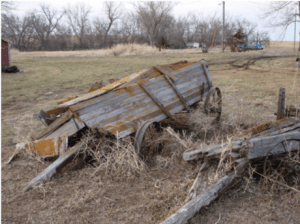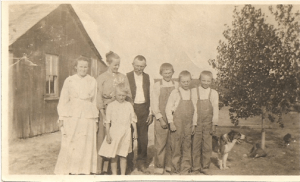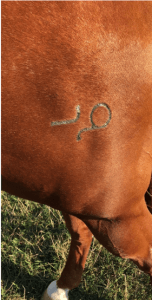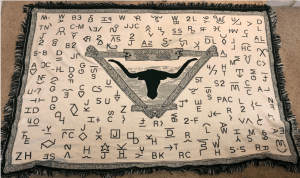Title: A Homesteader’s Proverb
General Information about Item:
- Oral Lore: Proverb
- Material Lore: Horse-drawn wagons
- Language: English
- Country of Origin: United States
- Informant: Mary Ann McKinney
- Date Collected: May 20, 2019
Informant Data:
- Mary Ann McKinney was born in Reliance, SD to a family full of farmers. She grew up with her sister, Dottie, on the land her dad farmed outside Reliance, and her grandparents on her mother’s side were immigrants from Czechoslovakia who homesteaded near Reliance under the Homestead Act in 1908. In growing up on a farm and spending time with her various relatives whose sole profession was working the land, Mary Ann is very knowledgeable on farming and its traditions.
Contextual Data:
- Social Context
- Mary Ann and her family would often visit her grandparents on her mother’s side, Anton Straka and his wife Katrina. Anton and Katarina immigrated into the United States through Ellis Island in 1905, traveling by train to Plattsmouth, Nebraska for a few years before setting off in a covered wagon towards South Dakota for free land under the Homestead Act. They arrived in Reliance too late to receive a full 160 acres but were able to start with 40 acres which they kept adding land to. Though he passed when Mary Ann was very young, “Granny” Katarina would frequently tell Mary Ann stories about his journey to the farm such as this proverb about the buggy. Granny never learned to speak English, so her communications with Mary Ann were translated through Mary Ann’s mother Catherine. Anton’s proverb “When the going gets tough, stick with the buggy” describes how difficult his journey was but reminds of the importance of being persistent and not giving up on the journey. His mention of the buggy highlights an item of material lore by specifically describing the method of transport, which was far more difficult than travel by ship or train.
- Cultural Context
- Land in South Dakota was mostly unsettled at the turn of the 20th century, leaving a tough journey for settlers looking to start a new life on the plains. Anton’s journey on a covered wagon took about six weeks to cover what is now about a 5-hour drive (300 miles) through hot and desolate prairies. This journey was common for the founding members of many of the family farms still in operation around Reliance, and many farmers across America today owe their success to ancestors who braved long and difficult journeys across dirt roads in horse-drawn wagons.
Item:
- “When the going gets tough, stick with the buggy.” –Anton Straka (1873-1948)
Associated Files:
Left: the buggy used by Anton and his wife to reach South Dakota
Right: Anton, Katarina, and their four children on their homestead (woman on left unknown)


Transcript of Phone Call with Mary Ann:
Tyler: Thanks for your time! Could you give a quick introduction of yourself and your connection to farming and then we’ll jump into the stories?
Mary Ann: Yes, my name is Mary Ann McKinney and I was born in Reliance, South Dakota in 1946. Our farm has been in the family since 1908 when your great-great-grandfather Anton settled the farm on 40 acres from the Homestead Act. He got up here too late and only got 40 acres instead of the usual 160 and had to make do with that little bit that now sits behind the old barn. When your Aunt Dot and I were kids we lived on your great-grandpa White’s—our dad’s—farm outside of Reliance where we have the hay fields now.
Tyler: Do you have any traditions, customs, or memories that stand out from your time growing up on the farm or running the farm now?
Mary Ann: After Grandpa Straka died before I was 2, we would visit Granny at the farmhouse and she would tell Dottie and I stories from Grandpa which had to be translated from Czech to English though our mom since Granny didn’t learn English—only Grandpa Straka did. His favorite quote was “when the going gets tough, stay with the buggy.” He used this quote to talk about the ride up from Plattsmouth, Nebraska to South Dakota in a horse-drawn wagon and how hard it was during the summer. It served to remind us that it was a tough journey, but he wouldn’t be where he was then if he hadn’t stuck with the buggy the whole way up. And that’s what I always think of whenever I feel stuck on something.
Tyler: Thank you so much, that was a great story!
Mary Ann: You’re very welcome, thanks for calling Tyler!
Collector’s Name: Tyler Bowen






